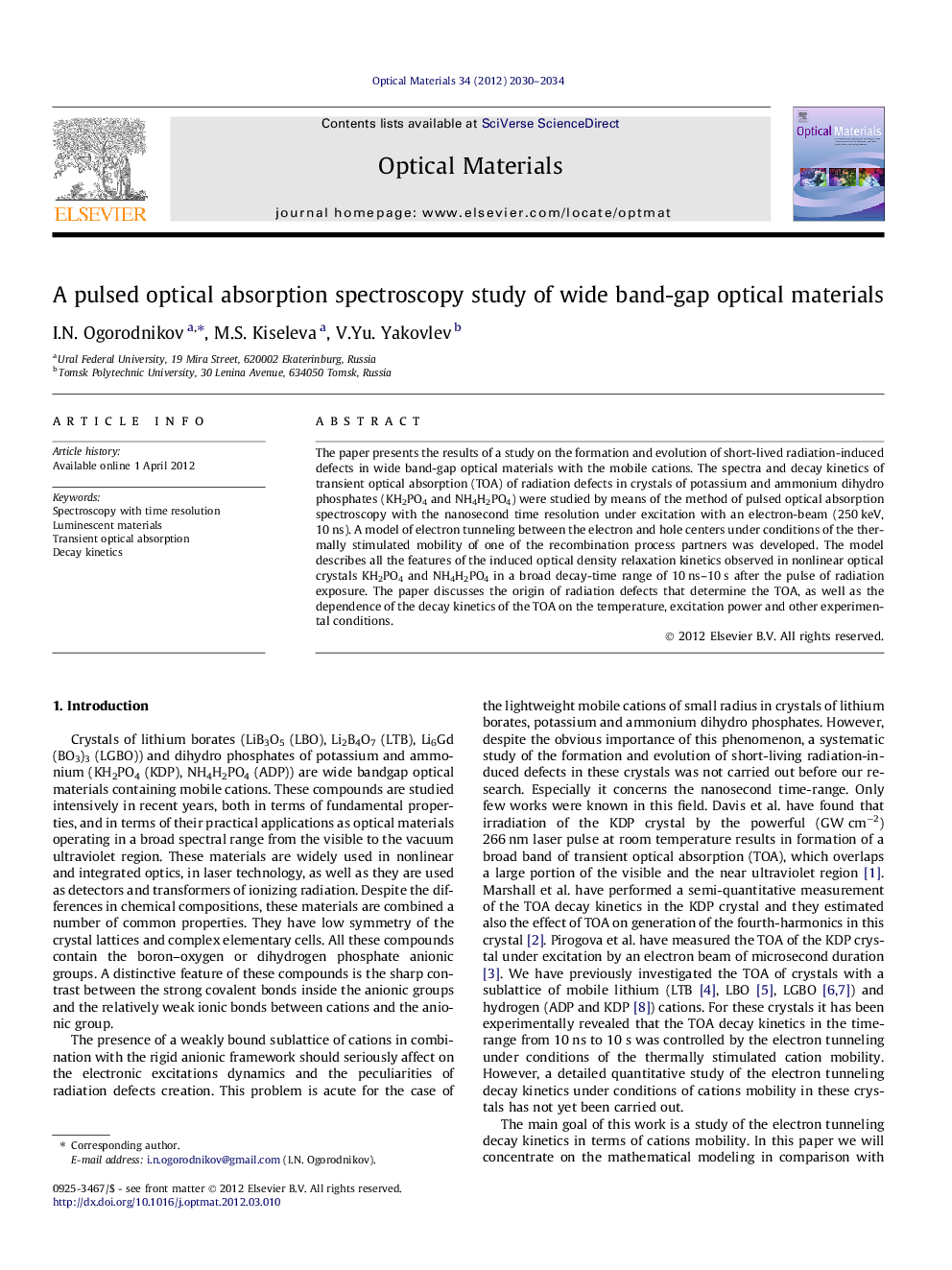| Article ID | Journal | Published Year | Pages | File Type |
|---|---|---|---|---|
| 1495239 | Optical Materials | 2012 | 5 Pages |
The paper presents the results of a study on the formation and evolution of short-lived radiation-induced defects in wide band-gap optical materials with the mobile cations. The spectra and decay kinetics of transient optical absorption (TOA) of radiation defects in crystals of potassium and ammonium dihydro phosphates (KH2PO4 and NH4H2PO4) were studied by means of the method of pulsed optical absorption spectroscopy with the nanosecond time resolution under excitation with an electron-beam (250 keV, 10 ns). A model of electron tunneling between the electron and hole centers under conditions of the thermally stimulated mobility of one of the recombination process partners was developed. The model describes all the features of the induced optical density relaxation kinetics observed in nonlinear optical crystals KH2PO4 and NH4H2PO4 in a broad decay-time range of 10 ns–10 s after the pulse of radiation exposure. The paper discusses the origin of radiation defects that determine the TOA, as well as the dependence of the decay kinetics of the TOA on the temperature, excitation power and other experimental conditions.
► We studied transient optical absorption of crystals KH2PO4 and NH4H2PO4. ► We developed a model of tunneling electron transport between mobile defects. ► The model adequately describe decay kinetics of the optical density relaxation. ► We explain dependence of the decay kinetics on excitation pulse intensity. ► We explain dependence of the transitional decay kinetics on temperature.
